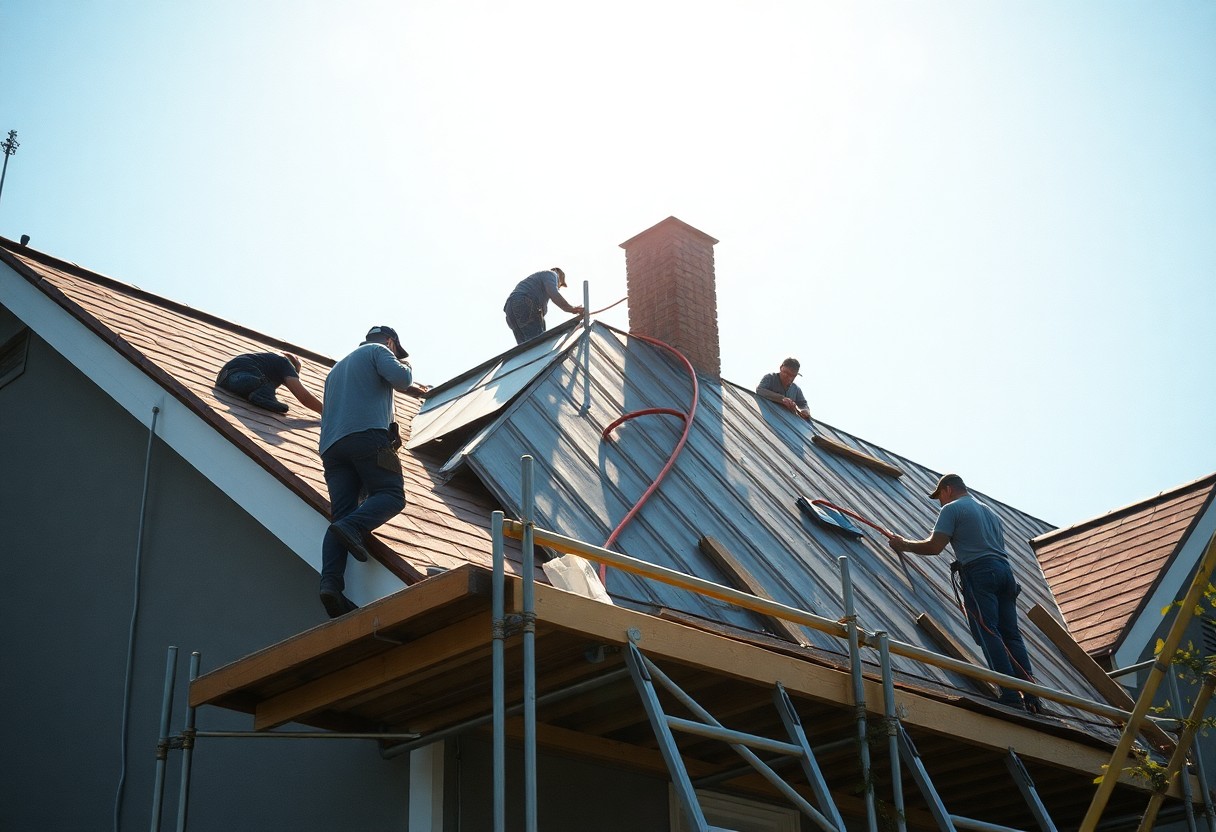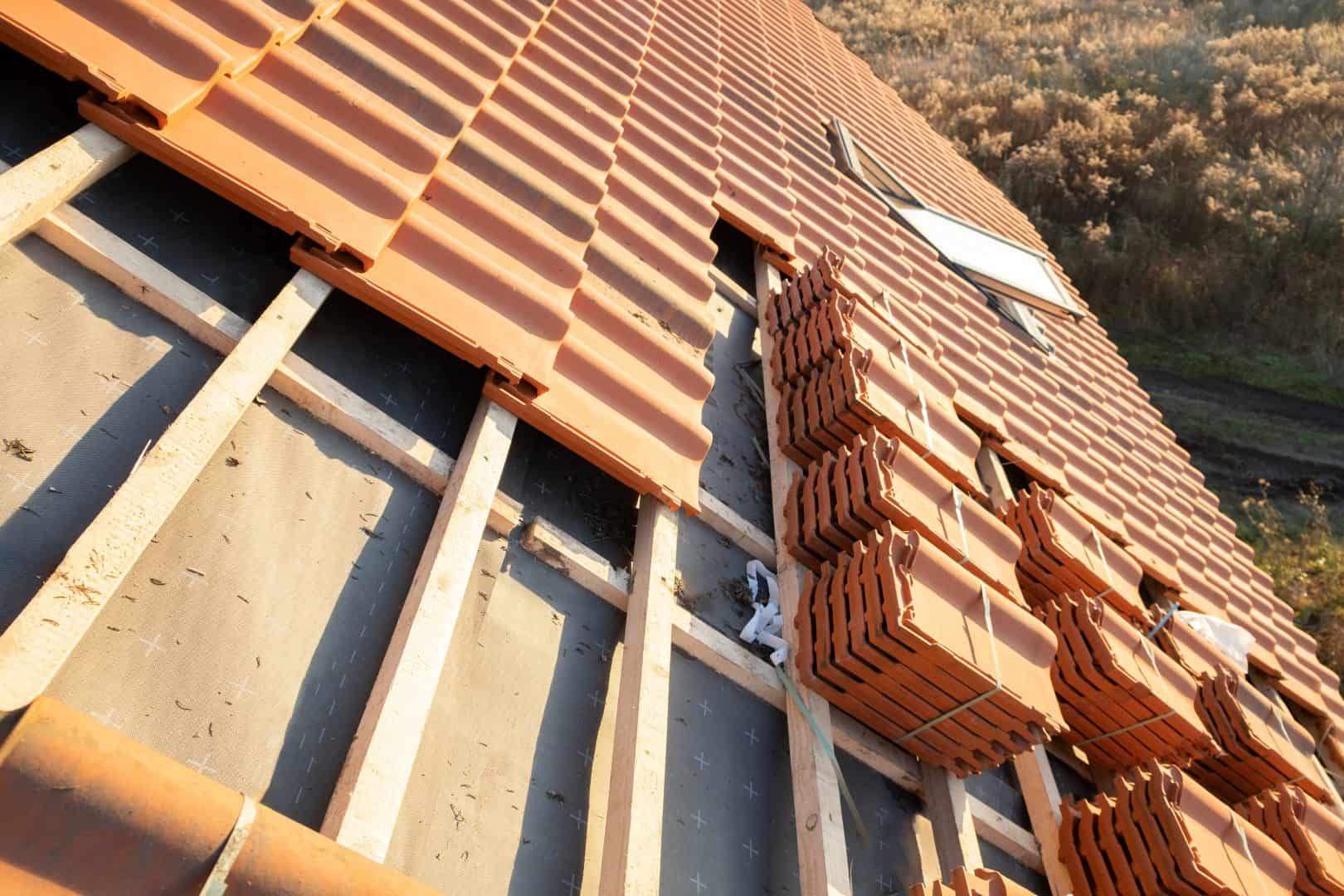How long will it take to install a new roof?
Fill Out The Form And We'll Get Back To You

Over the years, you may find yourself needing a new roof due to wear and tear or damage. Understanding the time it takes for installation is important for planning and managing your expectations. Various factors, such as the size of your roof, the materials chosen, and the weather conditions, can influence the overall timeframe. In this post, we’ll explore these factors in detail, helping you to better prepare for your roofing project and ensuring a smoother installation process.
Key Takeaways:
- Duration Variability: The time required to install a new roof typically ranges from a few days to several weeks, depending on factors like the size of the roof and the type of materials used.
- Weather Conditions: Weather can significantly impact the installation schedule; adverse conditions may cause delays, while clear and dry weather can expedite the process.
- Professional Expertise: Hiring experienced professionals can lead to a faster and more efficient installation, as they are well-versed in the best practices and potential challenges.
Factors Influencing Installation Time
The time it takes to install a new roof can be influenced by several key factors, including:
- Roof size
- Material type
- Weather conditions
- Accessibility of the property
Perceiving these variables can help you set realistic expectations for your roof installation timeline.
Roof Size
On average, larger roofs will take longer to install due to the increased area that needs attention, affecting both labour and material quantities.
Material Type
Around the type of materials you choose will also impact the installation time significantly.
This is because different roofing materials have varying installation processes. For example, asphalt shingles are generally quicker to install than metal roofing or tiles, which may require more intricate handling and additional steps to ensure proper fitting and sealing. Choosing a more complex material may extend your project timeline but can offer greater durability and style.
Weather Conditions
Above all, the weather can play a significant role in how quickly your roofing project proceeds.
Even small changes in weather can disrupt the installation process. For instance, rain can make conditions slippery and hazardous, while strong winds may delay work for safety reasons. Additionally, extreme temperatures can affect the materials and adhesives used, potentially leading to reduced performance or longevity of your roof. Keeping an eye on the weather forecast will help you plan accordingly.
Types of Roofing Systems
Some common types of roofing systems you might consider include:
- Asphalt Shingles
- Metal Roofs
- Tile Roofs
- Slate Roofs
- Wood Shakes
This variety in roofing options allows you to choose a system that best suits your budget and style. For more detailed insights, check out How Long Does It Take to Replace a Roof?.
| Roof Type | Estimated Installation Time |
| Asphalt Shingles | 1-3 days |
| Metal Roofs | 1-5 days |
| Tile Roofs | 3-7 days |
| Slate Roofs | 1-2 weeks |
| Wood Shakes | 1-2 weeks |
Asphalt Shingles
Among the most popular roofing materials, asphalt shingles are favoured for their affordability and versatility. They come in a variety of colours and styles, allowing you to customise your home’s appearance. Installation is generally quick, making them an appealing choice for many homeowners.
Metal Roofs
The growing trend of metal roofs is a testament to their durability and energy efficiency. These roofs can last significantly longer than traditional materials and offer excellent weather resistance. Your property will benefit from reduced energy costs and increased resale value with this investment.
Shingles are available in various styles and finishes, often mimicking the appearance of other materials like tile or wood. This gives you the flexibility to enhance your home’s curb appeal while reaping the benefits of a low-maintenance, long-lasting roofing system.
Tile Roofs
Among the most aesthetically pleasing options, tile roofs provide a unique charm and can boost your home’s overall value. Made from clay or concrete, these roofs are extremely durable and offer exceptional longevity.
At first glance, tile roofs capture attention with their vibrant colours and distinct shapes. They are particularly effective in hot climates, as they help keep your home cooler. Additionally, their weight and strength enable them to withstand severe weather, making them a wise choice for long-term investment.
The Installation Process
Your roof installation will follow a systematic process that ensures durability and quality. A typical roofing project involves comprehensive planning, preparation, and execution stages. By understanding each phase, you can better anticipate timeframes and potential challenges, making your roofing experience smoother and more efficient.
Preparation and Removal
Around one to two days are generally allocated for preparation and the removal of your old roof. This phase involves inspecting the current roof, addressing any underlying issues, and safely stripping away older materials. It’s necessary to create a clean and stable work environment to facilitate the installation process, allowing for optimal performance of your new roofing system.
Installation Steps
After the preparation and removal, the actual installation of your new roof begins, usually taking three to five days, depending on the complexity of your roof design. The timeline will vary based on weather conditions and the size of your roof.
The installation process comprises several key steps, starting with laying down underlayment to protect against moisture. Next, the new roofing material, whether shingles, tiles, or metal, is installed according to the manufacturer’s guidelines. Flashing and other protective elements are then added around chimneys and vents to ensure water tightness. Finally, proper ventilation systems contribute to the longevity of your roof. Each of these steps is vital to delivering a roof that stands the test of time.
Labour Considerations
Many factors contribute to the labour considerations when installing a new roof. The efficiency of your hired contractors, the size of the crew, and their expertise can all significantly impact the overall timeline for the project. It’s crucial to assess these elements to ensure a smooth and timely installation process for your new roof.
Contractor Efficiency
Along with the quality of materials, contractor efficiency plays a vital role in the duration of your roofing project. Experienced roofers can navigate potential challenges quicker, ensuring the installation progresses smoothly. You should check their previous work and client reviews to gauge their reliability and timing before making decisions.
Crew Size
Beside Contractor efficiency, the size of the crew fundamentally affects how quick your roof can be installed. A larger team can typically complete the work faster, but the balance between crew size and quality of work is important.
For instance, having a crew that’s too big can lead to crowding and inefficiencies, while a smaller crew might struggle to meet your deadlines. Ideally, you want a well-coordinated team that can work harmoniously to get your roof installed in a timely manner. Always consider the experience level of each crew member, as skilled tradespeople can contribute significantly to both the quality and speed of the installation.
Estimating Your Timeline
Not all roof installations follow the same timeline; various factors can affect how long your project might take. To get a clearer idea of the duration, you might want to consult resources like How long does it take tearing off and replacing a roof?. By assessing your specific circumstances, you can make a more accurate estimation of your own roofing timeline.
Standard Timeframes
By understanding the standard timeframes, you can better prepare for your new roof installation. Typically, a complete roof replacement can take anywhere from a few days to a week, depending on the size and complexity of your property.
Delays and Contingencies
Among the common reasons for delays are adverse weather conditions and unforeseen structural issues that may arise during the project. It’s important to stay flexible, as these factors can significantly alter your initial timeline.
This can also mean dealing with additional costs or rescheduling tradespeople already booked for the job. Having a contingency plan and a realistic mindset will help you manage your expectations throughout the process.
DIY vs. Professional Installation
Despite the appeal of saving money, deciding between DIY and professional installation for your new roof requires careful consideration. Undertaking a roof replacement on your own can bring added stresses and potential errors that might cost you more in the long run. For insightful details, you can check out 3 Things You Should Know About a Roof Replacement ….
Pros and Cons of DIY
With DIY installations, it’s important to weigh the benefits against the downsides. Here’s a quick review:
| Pros | Cons |
| Cost savings | Risk of injury |
| Control over the project | Time-consuming |
| Personal satisfaction | Possible mistakes |
| Learning experience | Lack of professional warranty |
| Flexibility with planning | Poor quality materials |
When to Hire a Professional
An important aspect of your decision should be when to enlist professional help for your roof installation. Knowing the signs can save you time and potential headaches that come with a DIY approach.
The complexity and safety concerns associated with roofing projects often necessitate professional input. If your roof has structural damage, if you’re unfamiliar with roofing materials, or if the project is extensive, hiring a skilled professional ensures the work is done correctly and safely. Furthermore, professionals have access to quality materials and can offer warranties that a DIY project cannot. Trusting experts can ultimately provide you with peace of mind and a roof that will stand the test of time.
Final Words
Conclusively, the time it takes to install a new roof can vary significantly based on factors such as the size and complexity of your roof, the type of materials used, and weather conditions. Generally, you can expect the process to last anywhere from a few days to a couple of weeks. It is advisable to consult with a professional roofing contractor who can provide you with a more accurate timeline tailored to your specific situation, ensuring that you are well-informed and prepared for the installation ahead.
FAQ
Q: How long does it typically take to install a new roof?
A: The duration for installing a new roof can vary significantly based on several factors, including the size of the roof, the type of materials being used, and the complexity of the design. Generally, a standard residential roof replacement can take anywhere from one week to three weeks to complete. Smaller roofs might be finished in as little as two days, whilst larger or more complicated projects might extend beyond three weeks, particularly if there are adverse weather conditions or the need for structural repairs.
Q: What factors can affect the time it takes to install a new roof?
A: Several factors can impact the timeline of a roof installation. First, the weather plays a significant role; inclement weather can halt progress, needing to wait for dry days to work safely. Second, the size and pitch of your roof influence the installation speed—steeper roofs or those with multiple levels often take longer to cover. Additionally, if the new roof requires the removal of old materials, this will add extra time to the project. Lastly, the type of roofing material chosen (e.g. asphalt shingles, tiles, or metal) can also affect the installation duration, as some materials are quicker to install than others.
Q: Is it possible to speed up the roof installation process?
A: While it is necessary to adhere to proper installation guidelines for a quality roof, there are strategies to potentially expedite the process. Hiring a larger, experienced roofing team may allow for more efficiency and faster completion. Providing clear access to your property and ensuring all necessary permits are obtained beforehand can also help accelerate the project. However, it is vital not to compromise on the quality of work or materials in the pursuit of speed, as a well-installed roof is vital for long-term durability and protection.
Re-Roof of Bungalow
The guys made a fantastic job of replacing the roof on our bunglaow. They were fasy, relaible and excellent value for money.
Chimney Removal
We employed Wrights Roofs to take down our very old chimney – tht had seen better days. They carefully removed and made good the area where the chimney was. Really impressed.
New Roof
We had an extension built and Wrights came and put a new roof on. They were brilliant, no fuss, great value for money. Thank you.
Roofs, Flat Roofs Chimneys and Solar Panels
If you need roof work on your home, please complete the form or call us today.

